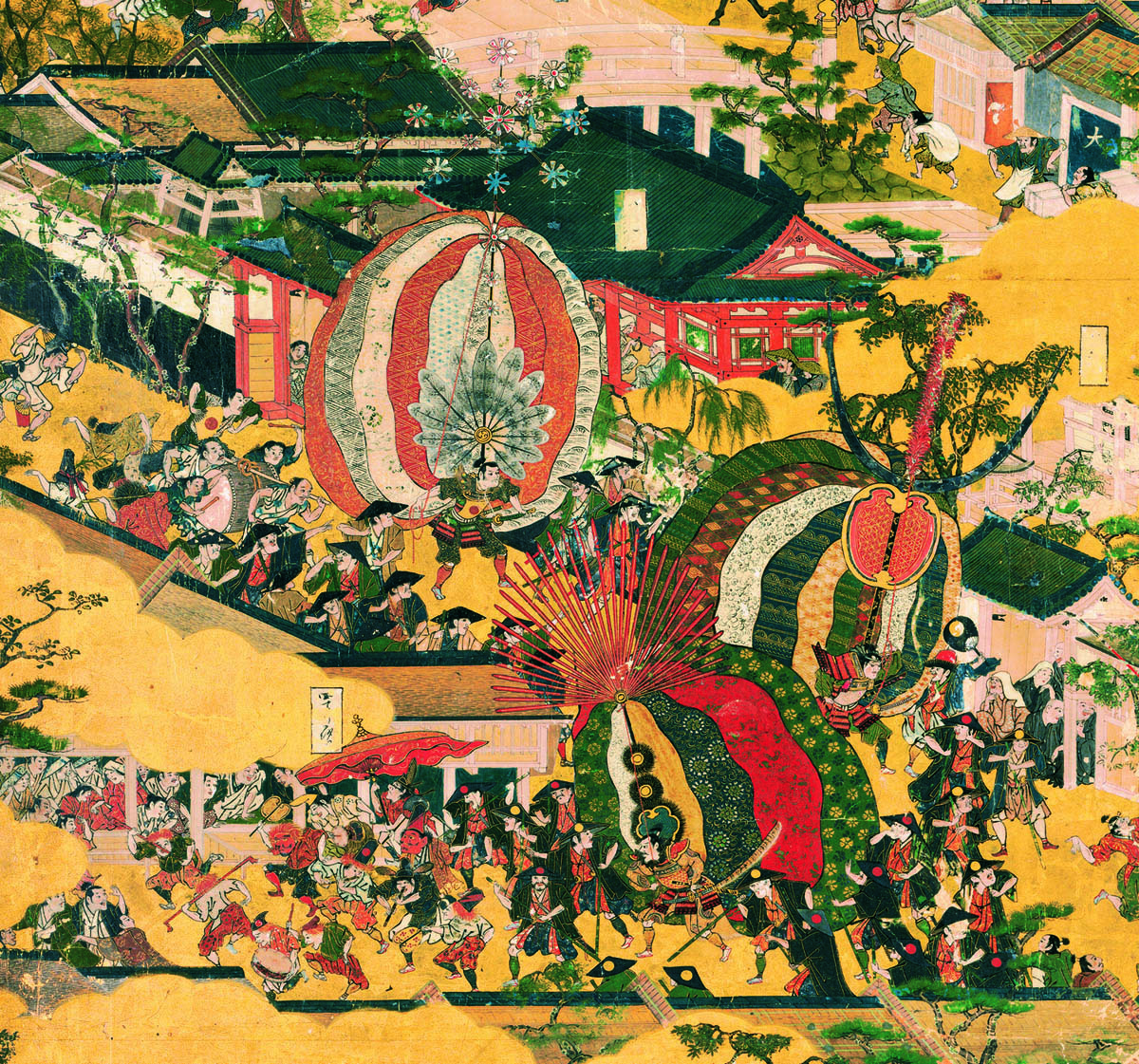Beneath Kyoto, the destination par excellence of tourists, aesthetes, and historians, are the scars and ashes of a much older capital of Japan. Founded in 794 as the seat of imperial authority, after a devastating civil war from 1467 to 1477, the city was rebuilt with opulent temples and palaces, which were decorated by the Kano school, the preferred artists of the ruling warrior class. "Kyoto from Inside and Outside" at the Tokyo National Museum, offers two compelling views of this ancient city: that of a bird, and that of an intrusive housefly.
In the former category are folding screens of a genre known as rakuchu rakugai-zu, or "scenes inside and around the capital." Included are those known as the "Uesugi," "Rekihaku A," "Rekihaku B," "Funaki," "Fukuokashihaku," "Shokiji," and "Ikeda" versions. The first is a National Treasure and the rest are Important Cultural Properties. Between gilded clouds emerge palaces, temples, shrines and humble dwellings, as well as samurai, revellers, artisans, female kabuki actors, dogs, foreign merchants and small children aloft their fathers' shoulders. We can spot famous landmarks such as Kiyomizu Temple and the Kamo River, and the then-newly revived Gion Matsuri (festival) winding through the streets, while snow-capped mountains and cherry blossom indicate the passage of time.
Populated with an estimated 2,728 figures (although curator Masato Matsushima confesses he hasn't counted them himself), the Funaki screens by the genre-painter Iwasa Matabei (1578-1650) afford unlimited voyeuristic fun. The spectacle of human activity and urban geography makes each artwork a beguiling visual object, but they become even more fascinating when we consider the context within which they were created.

















With your current subscription plan you can comment on stories. However, before writing your first comment, please create a display name in the Profile section of your subscriber account page.